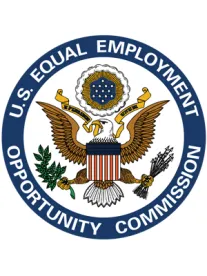Most employers have separation agreement forms that have served them well over the years. The terms have become fairly standardized and, aside from the occasional tweak, they don’t change much and are rarely challenged. Enter the EEOC, upsetting the apple cart with its new strategic enforcement initiative. In recent litigation, it has staked out an aggressive (and new) position challenging what appear to be fairly standard separation agreement provisions. Although it suffered a minor setback earlier this month, we shouldn’t expect it to back off from its new-found position.
First, some context. The EEOC’s 2013-16 Strategic Enforcement Plan identifies, as one of its top priorities, preserving access to the legal system by challenging overly broad separation agreements that, in its view, interfere with its ability to investigate claims of discrimination. Recently, the agency sued several employers for using separation agreements it believes interfere with its investigative mission. Significantly, in these cases, the EEOC has asserted that the employer engaged in a “pattern or practice” of resistance to the rights secured by federal EEO laws by using the flawed separation agreement form. In a pattern or practice case, the remedies the EEOC seek can go well beyond a single individual.
The EEOC’s recent lawsuit against CVS has received the most attention. EEOC v. CVS Pharmacy, Inc. (N.D. Ill.) (filed Feb. 2014). In that case, the EEOC objected to terms in CVS’s form separation agreement that most employers would likely consider fairly standard, e.g., a cooperation clause, a non-disparagement provision, a confidentiality requirement, and a release with a covenant not to sue. The EEOC argued that the agreement interfered with an employee’s right to file a charge with the agency, and the EEOC’s ability to investigate, even though the agreement provided – in language quite familiar to employers – that it did not prohibit the employee from participating in an investigation by a federal, state or local agency that enforces discrimination laws. This “carve-out” language has been routinely included in separation agreements since the EEOC seemingly endorsed it by including it in a 2006 consent decree with Kodak. In the CVS case, however, the EEOC complained that the carve-out language was limited to “a single qualifying sentence.” Particularly troubling to employers, the EEOC sought not only to require CVS to prospectively change its separation agreement form, but also to “reform” more than 650 earlier agreements.
On October 7, 2014, the district court granted CVS’s motion for summary judgment and dismissed the case. However, it did not reach the issue of whether CVS’s separation agreement violated federal EEO law. Rather, the court dismissed the case because the EEOC had not engaged in efforts to “conciliate” before commencing the lawsuit. Still, the judge added two footnotes that, although dicta, do not bode well for the EEOC’s position. In the first, the judge rejected the EEOC’s contention that “resistance” to an employee’s enjoyment of Title VII rights was a prohibited act under Title VII distinct from discrimination or retaliation. In the second, the judge indicated that the carve-out in CVS’s separation agreement allowing an employee to “participate” in an administrative proceeding included the right to file an EEOC charge (and even if the agreement had prohibited filing, that would be unenforceable but not an act of resistance to Title VII).
Notwithstanding the procedural defeat in the CVS case, the EEOC has indicated that it continues to have faith in the merits of its position. See http://www.chicagotribune.com/business/breaking/chi-cvs-severance-lawsuit-dismissed-20141008-story.html. The EEOC may appeal. But, whether or not it does, it’s probably only a matter of time before it sues another employer based on its separation agreement form (although in the next case it may conciliate before it sues).
And it’s not just about separation agreements. In September, the EEOC sued an employer for using pre-employment arbitration agreements that, in its view, did not adequately preserve an employee’s right to file a charge or participate in an EEOC investigation. EEOC v. Doherty Enterprises Inc. (S.D. Fla) (filed Sept. 18, 2014).
Takeaway: We know you like your separation agreements. But perhaps it’s time for a careful review with an eye towards retaining the best of the agreement while avoiding becoming the EEOC’s next test case.
On November 13, 2014, at our next “Labor & Employment Year In Review”seminar in New York, one of the topics we’ll cover is the EEOC’s challenge to separation agreements. We’ll discuss in greater detail exactly what the EEOC is up to, other recent (and unexpected) case law developments impacting separation agreements, the must have (and must not have) elements of an effective release, and best practices for getting the most out of a well-crafted and comprehensive separation agreement while avoiding the EEOC crosshairs. We hope to see you there.



 />i
/>i

